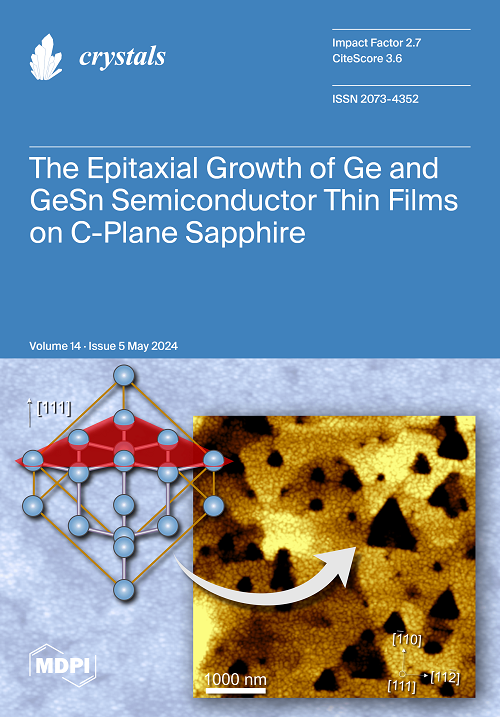Shape-Memory Effect of 4D-Printed Gamma-Irradiated Low-Density Polyethylene
IF 2.4
4区 材料科学
Q2 CRYSTALLOGRAPHY
引用次数: 0
Abstract
Four-dimensional-printed smart materials have a wide range of applications in areas such as biomedicine, aerospace, and soft robotics. Among 3D printing technologies, fused deposition molding (FDM) is economical, simple, and apply to thermoplastics. Cross-linked polyethylene (XLPE) forms a stable chemical cross-linking structure and shows good shape-memory properties, but the sample is not soluble or fusible, which makes it hard to be applied in FDM printing. Therefore, in this work, a new idea of printing followed by irradiation was developed to prepare 4D-printed XLPE. First, low-density polyethylene (LDPE) was used to print the products using FDM technology and then cross-linked by gamma irradiation was used. The printing parameters were optimized, and the gel content, mechanical properties, and shape-memory behaviors were characterized. After gamma irradiation, the samples showed no new peak in FTIR spectra. And the samples exhibited good shape-memory capabilities. Increasing the irradiation dose increased the cross-linking degree and tensile strength and improved the shape-memory properties. However, it also decreased the elongation at break, and it did not affect the crystallization or melting behaviors of LDPE. With 120 kGy of irradiation, the shape recovery and fixity ratios (Rr and Rf) of the samples were 97.69% and 98.65%, respectively. After eight cycles, Rr and Rf remained at 96.30% and 97.76%, respectively, indicating excellent shape-memory performance.4D 印刷伽马辐照低密度聚乙烯的形状记忆效应
四维打印智能材料在生物医学、航空航天和软机器人等领域有着广泛的应用。在三维打印技术中,熔融沉积成型(FDM)经济、简单,适用于热塑性塑料。交联聚乙烯(XLPE)形成了稳定的化学交联结构,具有良好的形状记忆性能,但由于样品不溶解、不熔融,很难应用于 FDM 打印。因此,本研究提出了先印刷后辐照的新思路来制备 4D 印刷 XLPE。首先使用低密度聚乙烯(LDPE)通过 FDM 技术打印产品,然后使用伽马辐照交联。对印刷参数进行了优化,并对凝胶含量、机械性能和形状记忆行为进行了表征。经过伽马射线辐照后,样品的傅立叶变换红外光谱中没有出现新的峰值。样品表现出良好的形状记忆能力。增加辐照剂量可提高交联度和拉伸强度,改善形状记忆性能。但同时也降低了断裂伸长率,且不影响低密度聚乙烯的结晶或熔化行为。在 120 kGy 的辐照下,样品的形状恢复率和固定率(Rr 和 Rf)分别为 97.69% 和 98.65%。经过八次循环后,Rr 和 Rf 分别保持在 96.30% 和 97.76%,表明其具有出色的形状记忆性能。
本文章由计算机程序翻译,如有差异,请以英文原文为准。
求助全文
约1分钟内获得全文
求助全文
来源期刊

Crystals
CRYSTALLOGRAPHYMATERIALS SCIENCE, MULTIDIS-MATERIALS SCIENCE, MULTIDISCIPLINARY
CiteScore
4.20
自引率
11.10%
发文量
1527
审稿时长
16.12 days
期刊介绍:
Crystals (ISSN 2073-4352) is an open access journal that covers all aspects of crystalline material research. Crystals can act as a reference, and as a publication resource, to the community. It publishes reviews, regular research articles, and short communications. Our aim is to encourage scientists to publish their experimental and theoretical results in as much detail as possible. Therefore, there is no restriction on article length. Full experimental details must be provided to enable the results to be reproduced. Crystals provides a forum for the advancement of our understanding of the nucleation, growth, processing, and characterization of crystalline materials. Their mechanical, chemical, electronic, magnetic, and optical properties, and their diverse applications, are all considered to be of importance.
 求助内容:
求助内容: 应助结果提醒方式:
应助结果提醒方式:


